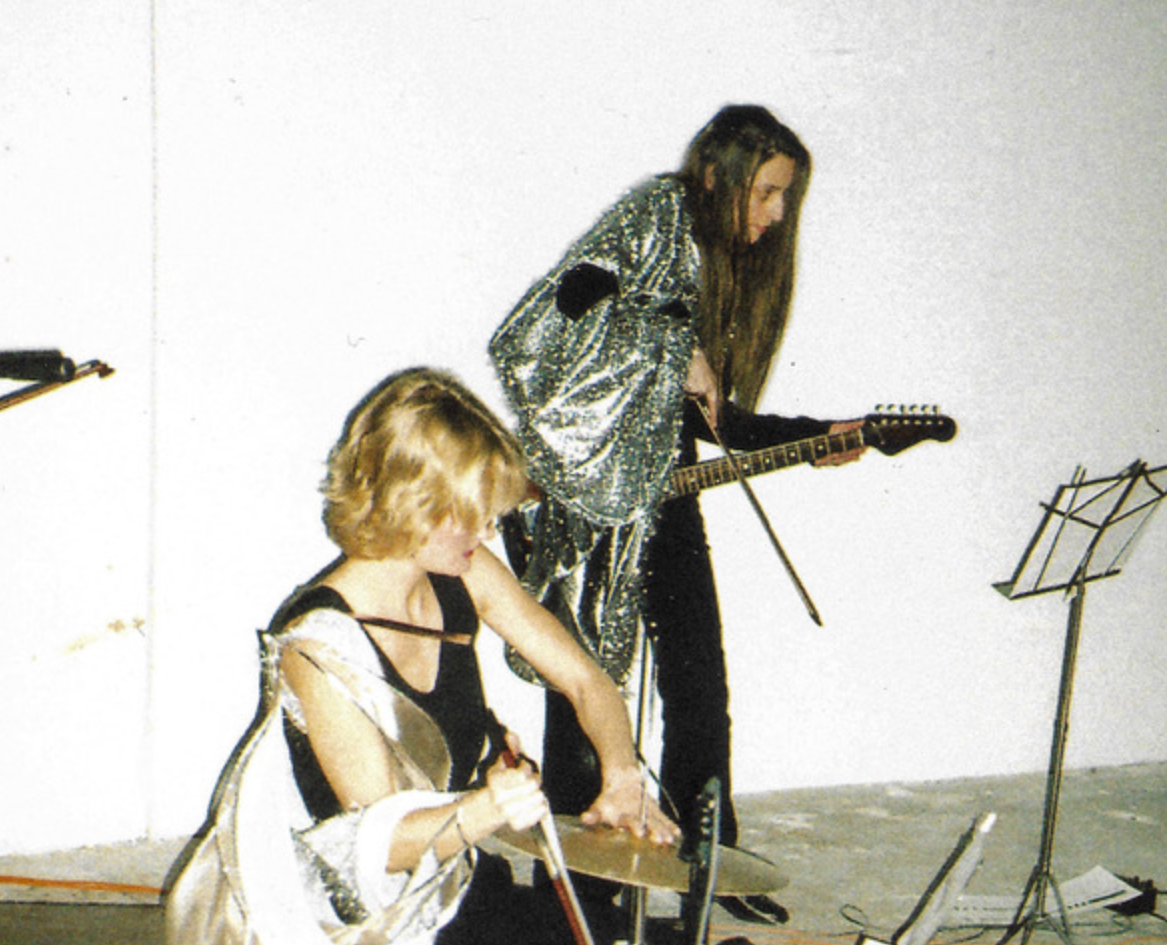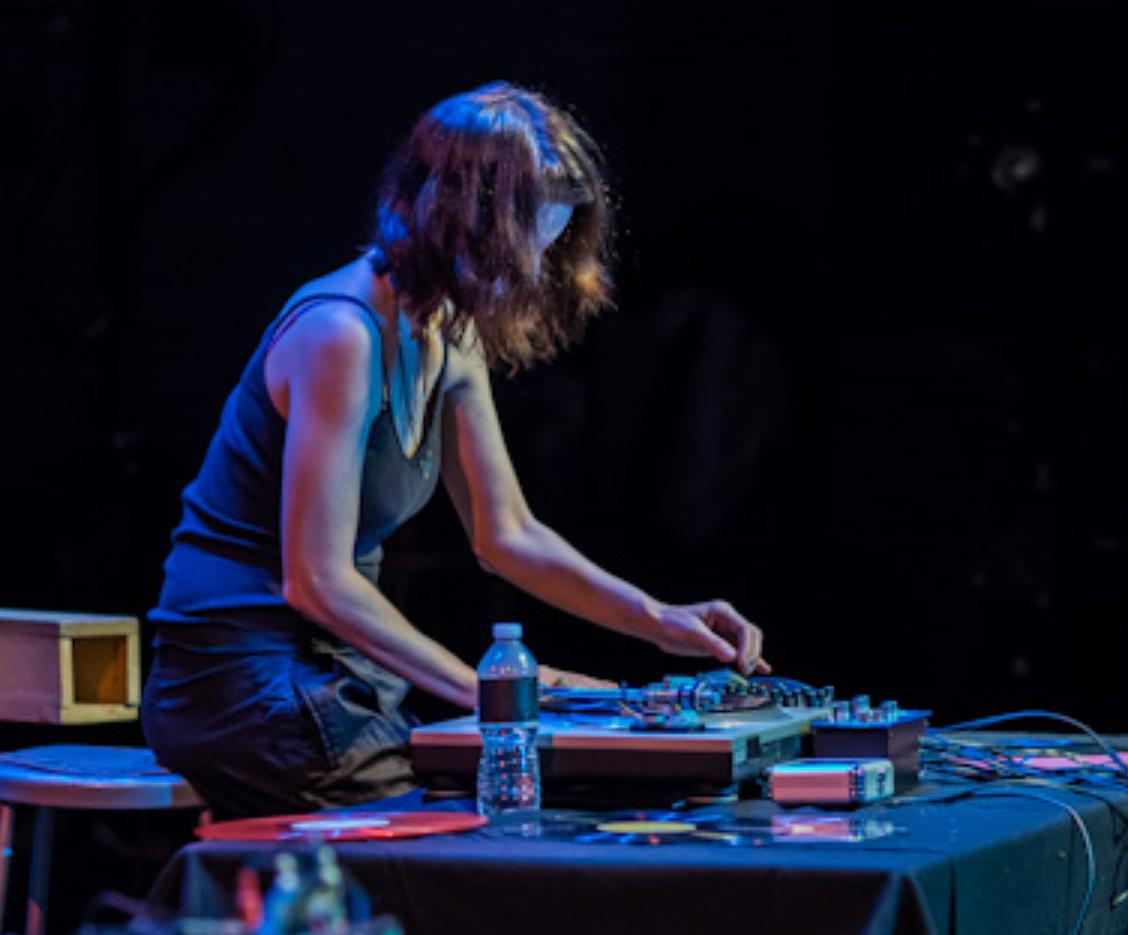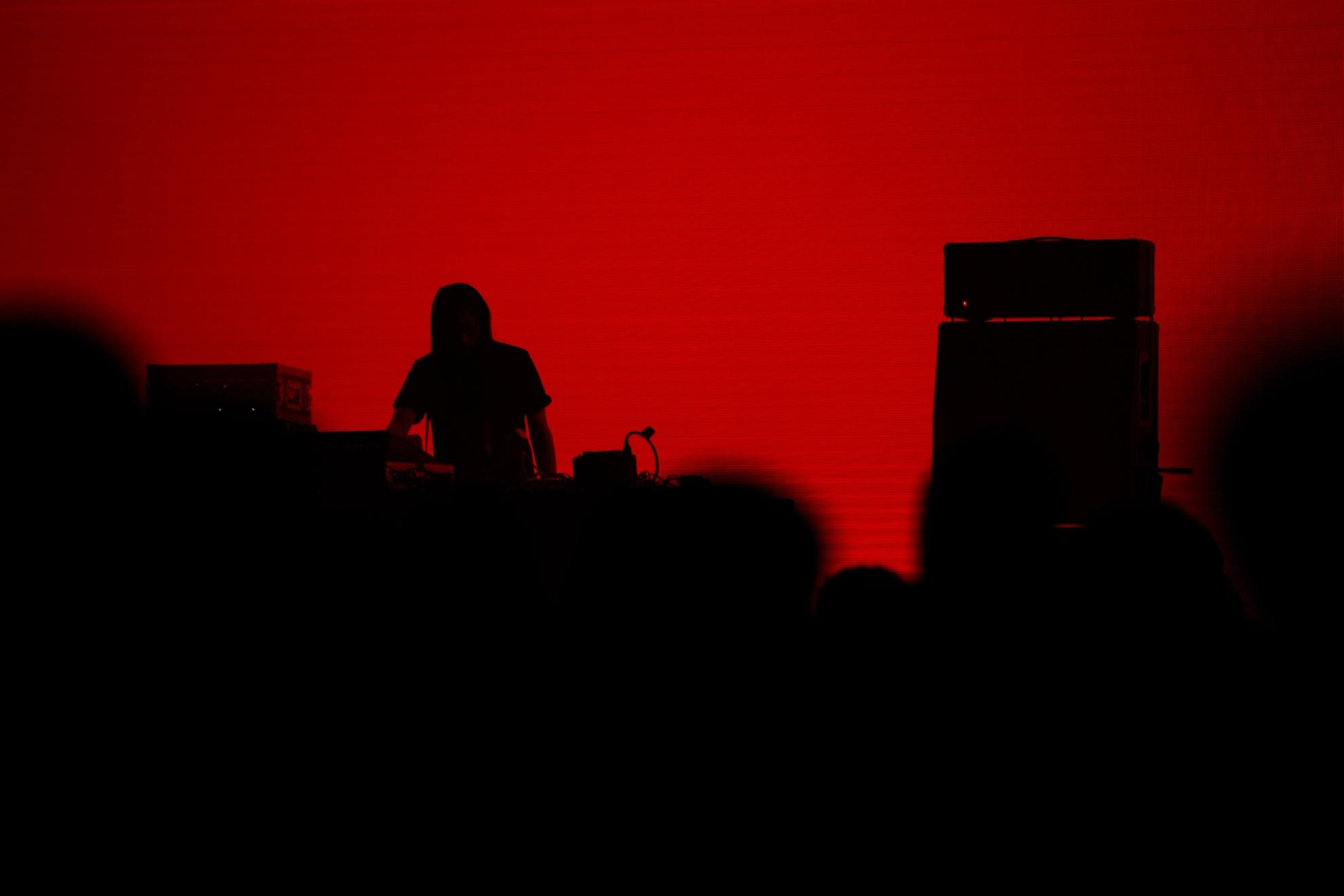
5 Questions with Tina Havelock Stevens/
5 Questions with Tina Havelock Stevens
Tina Havelock Stevens speaks with artist and curator, Lawrence English, to ponder how the input of moods, modes and movements come together in driving the emotional momentum of her performances.
The two artists explore the ambiguities of human nature through their discussion of moving image, sound, performance, mixed media and the input of effort and bodily energy from Tina towards her instrument.
LE: I’d like to start off by asking you about your relationship to the drums. They are a curious instrument in that they are so much about attack, they are sharp and dynamic, and require a kind of constant activation. Even cymbals and high-hats only hold vibration for some moments. Given this, has the notion of embodiment and the input of effort and energy required for activation been something that creates a link between how the instrument operates and its relationship with your practices more broadly?
THS: It’s about expression, a somatic, performative experience more than my awareness of the technical aspects of the drums. My impetus is instinctual and hard to define, driven by compulsion and reaction to the moment. The external framework and the context in which the drums as part of the artwork are placed is what drives the (emotional) momentum.
The framework also brings the boundaries and challenges (like drumming underwater as one of the more extreme examples of my practice) and I seem to only ever play when I am doing projects or performances. I use and need drums as a form of expression along with other aspects within the work I design. I almost have a detachment from them – so I also go about a reconnection to the instrument in different circumstances – my relationship with them is intuitive and fluctuating. I think this keeps spontaneity on numerous levels.
I’m always working with the lack of exactness that exists in human nature. A mix of improvisation, ambiguity and rubbery definitions might well be the description for my relationship to and how I play drums. I haven’t bothered to register the names of every part of a drum kit even after all these years. Back in the day, a rock critic wrote I played like ‘Richard Ploog on acid’. Richard was the drummer for The Church. I was playing in my first beloved band Plug Uglies then, and the comment would have been peppered by my gender somewhat, but I really appreciated this observation as it seemed to get the steady beat aspect of my work which then gets hacked by the sporadic unexpected.
Across all of my mediums that I use, I’m taking the temperature of moods, modes, and movements. I’m also often filming the elements and my works are frequently charged by water and wind, as a focal point for belief systems. Drums feel entirely elemental with their moody loud and quiet ways. I have been accused of being intense and extreme at times. I’ve pushed my body. I’ve stayed up later than everyone else.
So yes I suppose the effort and energy of drums is related because I push hard in my artworks, location, duration… sometimes I ponder about the inner rhythm of my heart. My blood pressure has revealed itself to be situational. I have also been attracted to loaded sites that are rather post-apocalyptic especially evident in my US works – although now that the pandemic is our global lifestyle and dystopia has well and truly hit the mainstream, I feel less in need of revealing such environments. The impact on the body of course is a thing whenever I’m working. Drumming. Flow. That impact then affects the improvisation. Interestingly when I began drumming in my late teens I was also concurrently experiencing panic attacks. This I put down to the nebulous transition into adulthood. Somatic beats forever. I also always noticed that if I sat in a quiet room and the furniture creaked my body would ‘ping’ with it at the same time.
I’ve spent decades with hand-held cameras and always say it doesn’t feel any different to other ways of being, using my sensibilities, never passively just playing or observing. I tend to read situations whether I’m holding a camera or the drumsticks, and I spontaneously compose all of it. So yes, I guess what is revealed really is a similar composition with shooting methodology and making.
So obviously I’m not so concerned with the theory of the process. It’s like I’m making a response rather than being responsive – I’m in control of the effect but I never shoot/ work/play for the effect if that makes sense.
LE: I wondered too if you felt there was a link between the pulse of the instrument and the way film works, historically at least through celluloid, thinking about it as a pulsing of light.
THS: I think with my own films there’s like an internal rhythm at play. Drummers as film makers perhaps?
An overt place of evidence for this would be in the editing but it’s in the shooting and placement of sound as well. The whole illusion of film is that the human eye can’t actually perceive the light pulsing or flickering – but like yourself, take away that its happened so its internally registered. Literal pulse is revealed when the camera frames per second is out of synch with the projection.
With this, I remember all of my Dads home movies as pulsing, the light falling onto my family’s onlooking faces and changing shades.
Oh that projector. The sound and smell of that thing as it heated up made the ritual of watching the silent movies all the more rhythmical. The whirr. The bulb on the projector would occasionally explode into the tiniest pieces, which always enhanced the scene with adrenalin too! So maybe on some level the temporality of both film and drumming coalesced inside my tiny mind at these moments.
In my work Thunderhead there are no cuts, just telegraph poles that go by and create a visual pulse, there are also rhythmical white outs.
LE: The desert, both literally and poetically, plays a role in several of your works. We sometimes think of these places as being voids, but I’ve always felt that rather than being empty, they are just existing in a state of time that is different to how other environments operate. They are often places which are simultaneously excessive and reductive, sometimes in the same moment. Ghost Class seems to capture this duality very directly. What is it that fascinates you about these types of places?
THS: I think you’ve said it all! Perhaps metaphorically deserts show that we are indeed functioning in a twilight zone most of the time.
I think I like them because the temporality is messed up. Time ceases to exist in a way. My natural inner tempo very much enjoys a place that feels like there is slow/no time.
Deserts can be perceived as nothingness but of course there is so much there.
Also the trope that you can become ‘lost’ in the desert is not a physical theory for me but more like a blankness of self.
I like to let the environment inform me rather than the other way around. Of course I can’t shed myself entirely but it feels close visiting these interplanetary places. Sometimes being in a world awash with images and theories and agendas is not what I need to be absorbing.
So there I am immersed, drumming in the carcass of a jet plane in my work Ghost Class, perhaps spontaneously informed by some sort of desert code, which is combined with an alertness informed by that emptiness which is far from empty, punctuated by a stream of human frailty, decay, belief systems, remnant energy, fascination, weather, and western malaise.
"Desert is simply that: an ecstatic critique of culture, an ecstatic form of disappearance” - Baudrillard
LE: I’m always happy to see Baudrillard pop up, still one of those voices of the 20C that seems to provoke so thoroughly into the 21C. The later half of that quote, this idea of disappearance (and ecstasy), I feel this particular phrase resonates strongly with the preoccupations of your work. I sensed works like Beats Of Darkness and The Rapids dwell there, simultaneously recognising how things are constantly slipping downstream, but that your pieces somehow relish the act of bring present to this process and perhaps even suggest a jubilation of giving one’s self over to that inevitability of disappearance.
THS: Yep that’s a good bit of sensing. I’m certainly not nihilistic. I jump into the unknown wholeheartedly and it prompts the works, the outcome almost makes me reappear - like finding empty space, making something in it and emerging with clarity.
I’m very aware of the disappearances that come with living.
LE: Finally, a question exploding outward from every strike of the drums - what does attack and decay mean for you in your work? Is one aspect more prevalent than the other? And if you had to choose to explore one over the other, which would it be and why?
THS: I’ll start with the last question first as that’s easier. If I was being tortured and had to choose I would go for decay. I love hearing sound as it goes into the distance. From something into nothingness… It signifies other worlds, ghost noise, moving through.
These days I think my playing is revealing itself to be more into decay and I think the use of mallets and my tendency to hang out on the floor tom and play with two sometimes is brutal evidence that I’m not as sticky and snappy tight high snare as I once was. My playing is different and informed by various locations and circumstances and I think I’m too inside it to make a call. I mean architecture and changes in the wind direction give locations a varied sonic sense of place and in large spaces I enjoy the time the sound takes to travel…and with that length then the time denotes in real-time my choices too.
As far as what it means for me? In a way, attack feels very precise to me. Tidy. Locked in. Maths. It not really how I see myself… Now that I’m thinking about it tho, I think I have a real mix in my playing going on tho. I still like a snappy snare.
This hurts my head a bit Lawrence.



